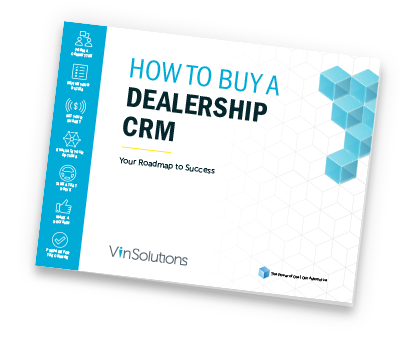Consumers are constantly bombarded by mass marketing, and many are frustrated by being inundated with messages that don’t apply to them. Personalized digital marketing and sales, however, provide an opportunity to set yourself apart with customers by treating them like the unique people they are.
Customers are tired of one-size-fits-all retail experiences, including car buying. According to the Cox Automotive Future of Digital Retail Study, 90 percent of consumers prefer a unique, personalized car buying journey. Additionally, customers’ expectations of the buying process have changed significantly. Nearly two-thirds of car buyers want to complete more of the purchase steps online than the last time they bought a car, according to the 2020 Cox Automotive COVID-19 Consumer & Dealer Impact Study.
If you’re ready to give your customers the kind of car buying experience they want (and increase profits for your dealership), here are three steps to personalize your automotive digital marketing and sales efforts.
Step 1: Collect Your Customer’s Data
When it comes to collecting customer data, automotive CRM systems really matter. With robust customer data stored in your dealership CRM, as well as other software platforms, you can start the process of segmenting your customers based on individual interests. From there, you can tailor a sales approach that is more likely to capture each individual customer’s attention. This approach to marketing helps prevent miscommunication between dealership and customer. And when your customers receive information (sales-related or not) that is relevant to them, it increases their trust in your dealership.
If you’re part of a dealer group, it is also important that you’re able to view customer data across stores. Wouldn’t it be good to know if the customer you’re speaking with just came from a sister dealership? This cross-rooftop data sharing enables you to identify possible brand defections and maximize profits with better visibility into a customer’s negotiations with other stores.
Again, this all hinges on the type of data you have. Real segmentation that leads to real personalized messaging comes from moving beyond basic demographics. For example, paying attention to your customers’ online browsing history and recording it in your CRM, like the VinLens integration between Connect CRM and Dealer.com does, can help you segment audiences based on key behaviors.
Step 2: Know the Buying Signals
Reading your customer data can sometimes feel like a foreign language. Not only do you have to collect the right type of data, you have to interpret that data to deliver the right marketing messages. And once again, technology comes to the rescue. CRM artificial intelligence tools like Connect Automotive Intelligence can quickly analyze huge volumes of customer data, identify trends and flag customers that may be ready to talk. Then, you can take a more proactive sales approach to deliver both timely and relevant marketing that will catch your customers’ attention.
You can learn a lot about your customers based on the equity they have in their current vehicles, for example. But unsurprisingly, some of the most insightful buying signals come from your customers’ browsing behavior, including their budget, the makes/models they’re interested in and the frequency/timing of their browsing.
Step 3: Hit the Mark with Your Marketing
Automated technologies like website analytics and your CRM can give you insight into customer behavior — especially when the two technologies are integrated like they are with VinLens. But now that you’ve used those tools to gather and interpret data, it’s up to you to make a personalized marketing offer. Know your customers’ interests. And deliver messaging that’s warm, welcoming and lets them know you know where they’re coming from and what they want.
Naturally, you’ll use the data you’ve gathered about your customers to guide you through the process. Is a group of customers looking for similar prices, vehicle sizes and features? This information will help you customize pricing and vehicle options and make relevant product suggestions. And it helps you develop authority and rapport with your customers.
With the right technology tools, you can take a more personable and proactive approach with your marketing efforts. And when your customers see that you’re trying to give them information and offers they actually want, they’re more likely to value your suggestions and remain loyal to your dealership.



